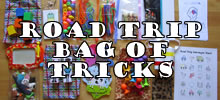2009 is the International Year of Astronomy. My whole life I have loved looking up at the stars. They have pulled me with their wonder and beauty. So a whole year devoted to astronomy is great. I’ve already enjoyed seeing a few things in the heavens this year and put some pictures up (Perigee Moon, Moon & Venus).
One that I wanted to see was Comet Lulin (picture 1, picture 2, how to see it). There were a couple of problems though. The first is that I only have my bare eyes to look at the stars with. With contacts/glasses though, my eyesight is pretty darn good. But having a pair of binoculars or a telescope would come in handy for a few things (like looking at Saturn’s rings).
The other problem is light pollution. I found a website that matches light pollution with a Google Earth map so you can see where there is really too much light pollution to see the stars around you – Dark Sky Finder. Basically, the entire East coast is too polluted. The entire drive between Tucson and Phoenix is too polluted. I have to drive outside of Tucson on some less traveled roads for an hour to get away from the city lights.
Light pollution is huge.
Sure the pictures of the earth from space at night are neat when you can see all the lights. But it’s also sad that we have done that to our world, to our skies. There are places on this earth (New York) where people can’t see the stars. With all this talk about cleaning up air and water pollution, maybe we should also work on light pollution (A New Push to Turn Off the Lights in 2009). And maybe we could work on noise pollution while we are at it. The places where you can go and not hear manmade noises are dwindling too.
The light on my porch has been burned out for a while. And I’m leaving it off. There’s enough light pollution around my place that it’s never completely dark anyway.

 I am an educator and PhD. I quilt, belly dance, run, read, and try to grow things. I am a Mormon. I am infertile. I am a daughter, sister, aunt, grand-daughter, friend, wife, and mom.
I am an educator and PhD. I quilt, belly dance, run, read, and try to grow things. I am a Mormon. I am infertile. I am a daughter, sister, aunt, grand-daughter, friend, wife, and mom.














You too, can help track light pollution!
GLOBE at Night is a website that asks people to go outside on any clear night between March 16 and March 28 and look at the constellation Orion and compare it to some charts they’ve prepared. Then you tell them what chart it most looked like at your place. This way they can track light pollution levels around the world.
So go outside. Try and see some stars. And learn where Orion is if you haven’t seen him before.
:sleep: And since they want people to look just an hour after sunset, that’s still plenty early to get your beauty rest after watching the stars.